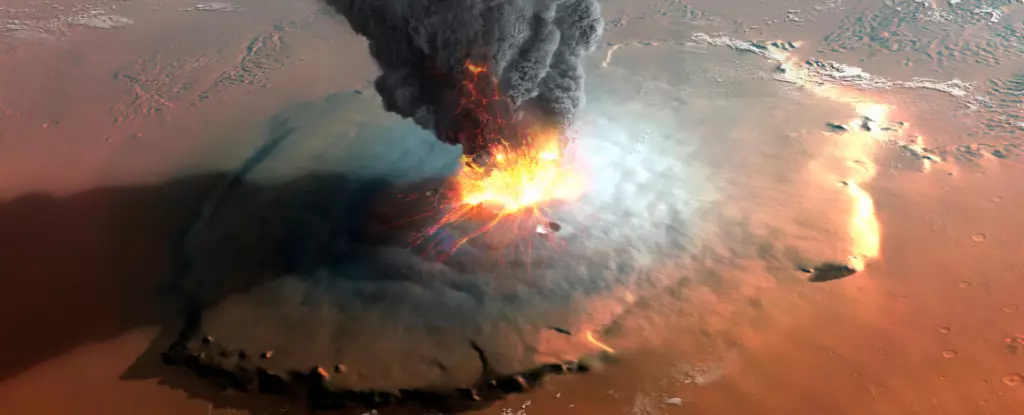Mars, despite its quiet demeanor today, has a turbulent past that could shed light on Earth’s own geological history. A recent survey of the Martian surface reveals a landscape once riddled with massive volcanoes, similar to what Earth experienced before the formation of tectonic plates. These findings provide valuable insights into the formation and evolution of Earth’s crust.
Unlike Earth, which has a crust composed of tectonic plates, Mars is considered a one-plate planet, devoid of such geological structures. Researchers from the University of Hong Kong, led by planetary scientist Joseph Michalski, conducted a detailed analysis of the volcanic scars in Mars’ Eridania region using remote sensing data gathered from various orbiters. They discovered that the volcanoes on Mars were massive and explosive, with Olympus Mons being the largest, boasting a volume 100 times larger than Mauna Loa in Hawaii, the largest shield volcano on Earth.
One of the reasons for Mars’ colossal volcanoes is the absence of tectonic plates. On Earth, the movements of these plates allow for the release of pressure from the mantle, preventing the buildup of volcanic activity on such a massive scale. Exploring the geological history of Mars’ crust, which remains largely intact, provides invaluable information about how Earth’s own crust may have formed.
Michalski and his team focused their investigation on the intensely magnetized crust of Mars’ Eridania region, which is believed to have once housed an ancient Martian sea. Through orbital data analysis, they identified four different types of volcanoes in and around the Eridania sea: volcanic domes, stratovolcanoes, pyroclastic shields, and caldera complexes. These volcanoes bear a striking resemblance to their Earthly counterparts, albeit with larger diameters due to the lower gravity and more explosive volcanism on Mars.
Furthermore, the researchers noted that the volcanic compositions in the Eridania region are distinct from any other known volcanic deposits or regions on Mars. This uniqueness further contributes to the region’s enigmatic character and provides additional evidence of Mars’ dramatic past.
Crustal Evolution and Volcanic Activity
Examining the topography of the ancient Martian landscape, Michalski and his colleagues discovered telling signs of crustal evolution. The thickness of volcanic deposits, along with sections of warped and folded crust, and sagging basins, suggested that the crust of young Mars may have undergone a slow overturning process facilitated by vertical tectonics. This precursor to plate tectonics could explain the existence of the diverse volcanism in the Eridania region.
The researchers believe that there may be hundreds more volcanoes hidden beneath the surface of the Eridania region, and many of them likely erupted beneath the ancient Martian sea. This parallel to Earth’s Archean period, when our planet was predominantly covered in water and life first emerged, adds to the fascination and magnitude of activity in this Martian region.
The volatile history of Mars, with its monumental volcanoes and unique geological features, holds valuable insights into the formation and evolution of Earth’s own crust. The absence of tectonic plates on Mars allows researchers to study a preserved snapshot of early geological conditions, providing clues about Earth’s past. As our understanding of Mars deepens, we continue to discover the interconnectedness of our neighboring planet’s story with our own. Through unraveling Mars’ mysteries, we unlock the secrets of our own planet’s geologic evolution.


Leave a Reply